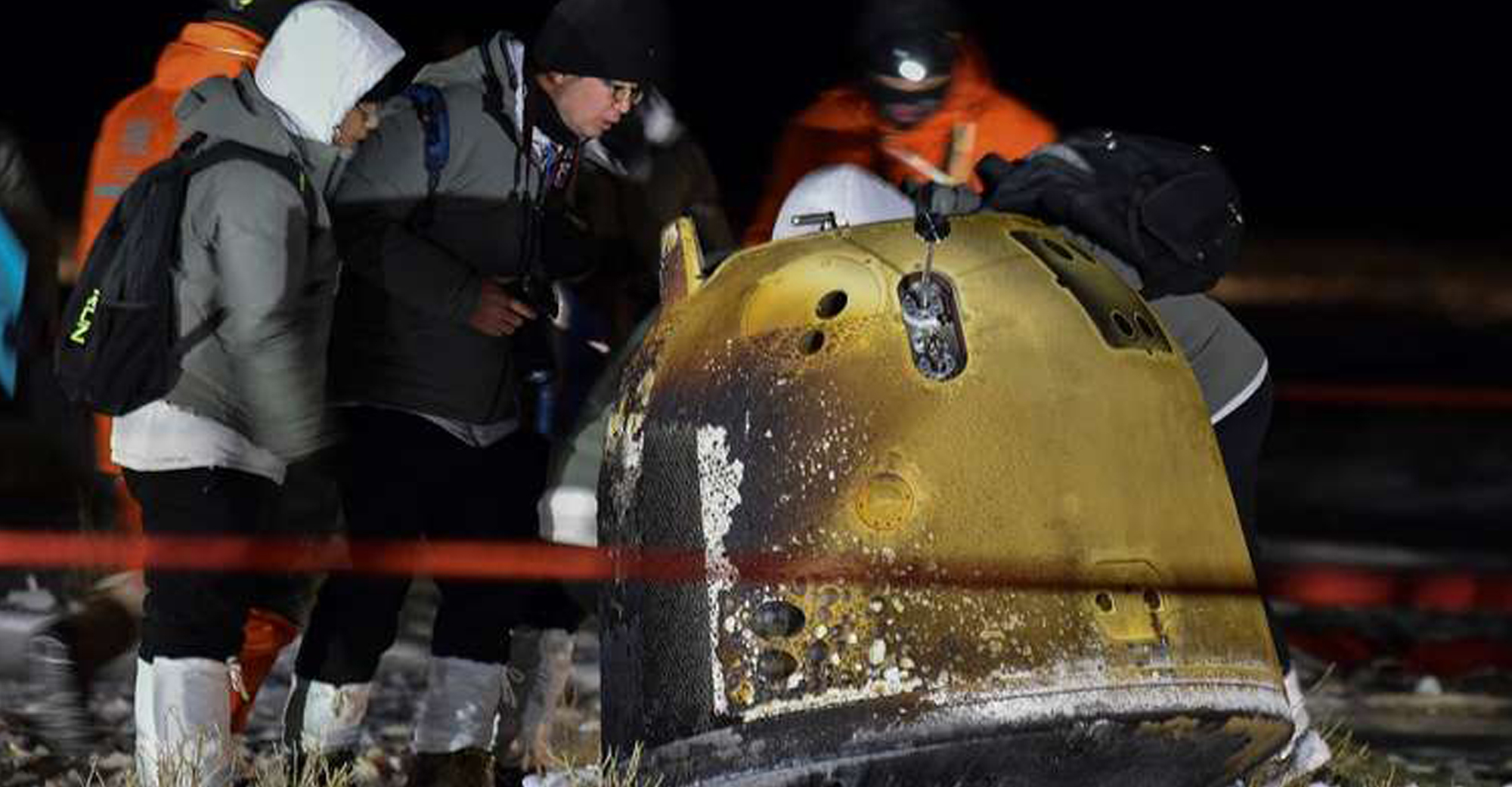
China’s Chang’e 5 Lunar Probe Successfully Returns to Earth with Moon Samples
Want to read in a language you're more familiar with?
On Dec. 17 at 1:59 a.m. (Beijing Time), China’s Chang’e 5 spacecraft successfully returned to earth and landed in Siziwang Banner in north China's Inner Mongolia Autonomous Region.
On Dec. 17 at 1:59 a.m. (Beijing Time), China’s Chang’e 5 spacecraft successfully returned to earth and landed in Siziwang Banner in north China's Inner Mongolia Autonomous Region, according to the China National Space Administration.
After 23-days of space exploration, Chang’e 5 concluded its journey with precious soil and rocks collected from the moon.
Even if the landing mission is the last task of this miraculous journey, it is still full of challenges.
The size of Chang’e 5’s returner is only one-seventh of a spaceship’s return capsule. Also, Inner Mongolia’s winter night time has harsh weather, so the landing site is covered in snow. These critical conditions make the search work much more difficult.

To ensure a safe landing, the team sent out two search groups, one with helicopters and one with ground vehicles, to retrieve the returner. The ground team had 16 vehicles at the landing site and they had practiced this historical task many times, according to the search and retrieval team of the mission on Tuesday.
SEE ALSO: China’s Chang’e 5 Lands on the Untouched Side of the Moon
Chinese President Xi Jinping congratulated Chang’e 5’s mission success overnight and paid tribute to all those who contributed to the historic achievement.
Xi noted that this mission is the most complicated space project in China’s history and the mission will lay the foundation for further understanding of the moon’s origin and evolution of the solar system.
SEE ALSO:China Plants National Flag on the Moon
Bringing back the country’s first samples collected from the moon, as well as the world’s freshest lunar samples in over 40 years, China is already planning for future lunar exploration projects, according to Pei Zhaoyu, the deputy director of the Lunar Exploration and Space Program Center of the China National Space Administration.
“We hope to cooperate with other countries to build an international lunar scientific research station, which can provide a shared platform for lunar scientific exploration and technological experiments,” Pei said.





